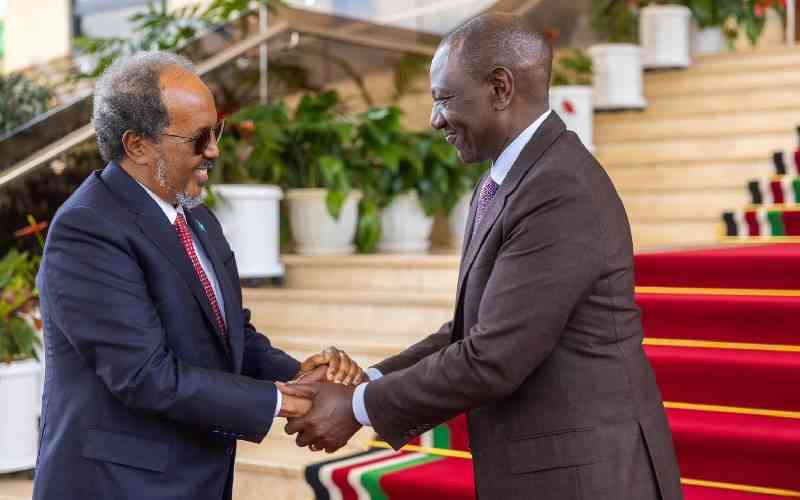By Benard Sanga
Kenya: Despite recent attacks in Mombasa, which have been blamed on Al Shabaab, local police claim the violent threat by militants is waning.
Evidence provided by the same police officers, however, suggests that Al Shabaab is not down and out, in spite of the loss of key operational and inspirational leaders like Sheikh Abubakar Sharif alias Makaburi, who was killed on April 1 after bailing out suspects detained following the February 2 storming of the controversial Musa Mosque.
Makaburi and his former ally Sheikh Aboud Rogo Mohamed, now deceased, preached at the mosque with a long established credential as a base for militancy and links with Al Shabaab.
Some analysts believe the killings of the two militants has not weakened Al Shabaab or Al Hijra, its affiliate in Mombasa and Nairobi, and point to the fact that a month after Makaburi’s killing, militants still detonated two explosives on May 3, causing three deaths. Given the nature of the Improvised Explosive Devices (IEDs), the death toll could have been higher but the was absorbed by the suicide bombers carry it. Yet some analysts believe many more attacks have been foiled and that the current attacks could be diversionary and a prelude to something much bigger.
High profile extremists
Suleiman Mohamed Said and Jamal Mohamed Awadh died in the May 3 blast alongside Emily Katana, but police believe the first two could have planted the explosives.
On July 12 last year, the UN Monitoring Group for Somalia and Eritrea published a report seeking to demonstrate that despite their legal problems, Makaburi and British terror suspect Jermaine Grant continued to hold high profiles within Al Shabaab and Al Qaeda circles in East Africa. Grant was then held at Kamiti Maximum Prison while Makaburi was apparently held back by multiple legal problems that restricted his movements, yet the report appeared to suggest that the two retained conversation and operational control of Al Shabaab and Al Hijra.
Grant, (right) is held at the Shimo la Tewa together with 19 terror suspects at the prison’s Block F, where authorities say he has radicalised most terror suspects. In the report, Makaburi and Grant’s alleged links to terrorism are derived from their alleged support for Al Hijra, the successor to the Muslim Youth Centre MYC based in Nairobi’s Pumwani slums and which has been accused in past UN reports of raising money for Al Shabaab and Al Qaeda and recruiting fighters for the Somali extremist movement.
The report alleged that from jail, Grant had provided support for “ongoing plots” by militants across East Africa. “Al Hijra, in partnership with the Ansar Muslim Youth Centre in Tanzania, has sought operational direction and guidance since the latter part of 2012 from individuals with former ties to Al Qaeda in East Africa and self styled Al Qaeda affiliates including Abubakar Shariff Ahmed ‘Makaburi’ and United Kingdom national Jermaine John Grant.”
On March 18, a revolt was reported at Shimo la Tewa Prison and authorities suggested that Grant and fellow terror suspects Wedi Iddi Zubeyr and Kassim Stadi planned it to allow a massive jail break. To effect the alleged break out the supposed conspirators recruited a prison official who acted as a courier to the outside world and to the Musa Mosque.
Links to Masjid Musa
Revelations that Awadh had links to Musa Mosque cemented a hypothesis that he had extremist views leading to terror links and that he might have received some message from the prison official from Shimo la Tewa and went to the mosque, where he was arrested on February 2. Police say Suleiman was released from Shimo la Tewa on February 20 only after a court of appeal quashed a death sentence imposed on him for violent robbery in 2009 suggesting that he might have become radicalised by militants at Block F.
Police also suggest that Jamal and Suleiman were friends living in Kingorani, although Jamal traced his roots to Mariakani in Mombasa. Top CID official in Mombasa Henry Ondiek says extremists appear to have adopted the use of IEDs because they have become weak.
“Ideally they should use industrially manufactured weapons like hand grenades, but they have resorted to IEDS because they are easy to assemble and components to make them can be acquired legally,” says Ondiek, citing similarities in the IEDS used in the blasts on the beach behind Reef Hotel and Mwembe Tayari bus stage.
Stay informed. Subscribe to our newsletter
Mohamed Osman Ibrahim from Canada and Abdillahi Salih Saleh from Somalia were arrested early last week after police claimed they had tried to book in the hotel. Police allege the two were behind the IED and also indicate that besides a laptop computer they were found with literature on terrorism with targets and propaganda.
Last Sunday, Alyaan Mohamed, a police informer and counter-terrorism expert was shot dead at his house in Shella in Malindi, raising fear that Al Shabaab cell members had ordered the killing, which was hailed as justified in Islamist blogs and Facebook posting.
Alyaan’s murder was preceded by internet postings urging for the killing of those “who spy on Muslims”. He became the third counter-terrorism agent to be killed after the December 4 decapitation of fellow agent Faiz Mohamed Bwarusi and Ahmed Bakhswhein, who was shot dead in broad daylight in Malindi last January.
 The Standard Group Plc is a
multi-media organization with investments in media platforms spanning newspaper
print operations, television, radio broadcasting, digital and online services. The
Standard Group is recognized as a leading multi-media house in Kenya with a key
influence in matters of national and international interest.
The Standard Group Plc is a
multi-media organization with investments in media platforms spanning newspaper
print operations, television, radio broadcasting, digital and online services. The
Standard Group is recognized as a leading multi-media house in Kenya with a key
influence in matters of national and international interest.
 The Standard Group Plc is a
multi-media organization with investments in media platforms spanning newspaper
print operations, television, radio broadcasting, digital and online services. The
Standard Group is recognized as a leading multi-media house in Kenya with a key
influence in matters of national and international interest.
The Standard Group Plc is a
multi-media organization with investments in media platforms spanning newspaper
print operations, television, radio broadcasting, digital and online services. The
Standard Group is recognized as a leading multi-media house in Kenya with a key
influence in matters of national and international interest.









